Living Data
Science Art & Talks
Disclaimers, Copyrights and Citations
Conversations/Index 2010 2011 2012 2013 2014 2015 2016 2017 2018 2019 2020 2021 2022 2023 2024
The experiential process of observation and reflection is key to art and science
and is an essential component in understanding interdependence
of all species and ecosystems, terrestrial and aquatic.
Paul Fletcher Animator
Science Art & Talks
Living Data Program for the 2013 Ultimo Science Festival, Sydney, September 12-21.
Plastiscenic - future remains Objects by Shona Wilson
Plastics invade the natural world. Art is made to reflect the cross-pollinations between nature, humans and culture.
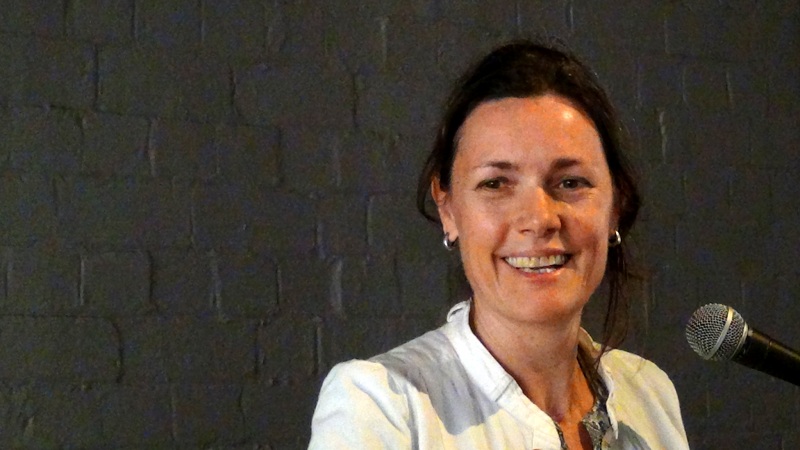
Shona Wilsonspeaks at the Living Data forum, Understanding through Art and Science.
Shona Wilsonis interviewed by Dr Simon Pockleyat the Muse on Sunday 15th September 2013.
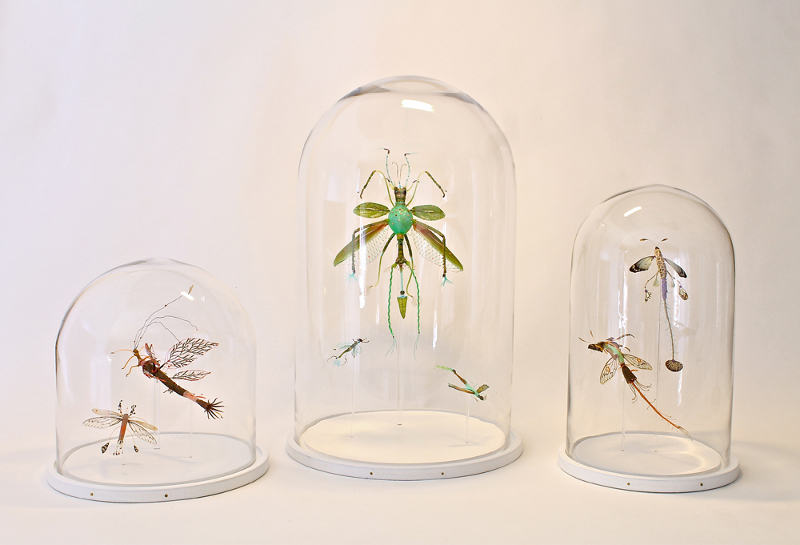
Shona Wilson. Objects under glass domes, 2013
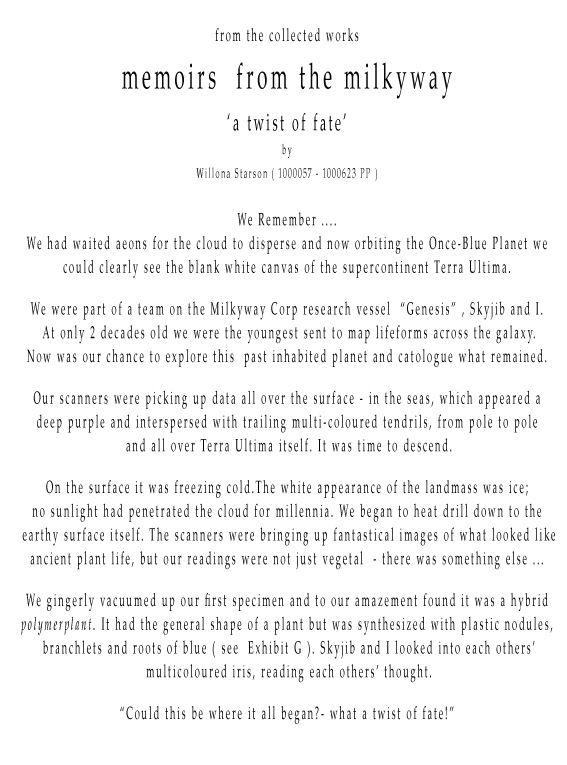
Memoirs from the Milky Way Story by Shona Wilson
Two years ago I discovered the phenomenal fact that plastic particles were now found inside plankton.
My current work increasingly responds to and reflects upon the cross-pollinations between nature, humans and culture, referencing in particular, plastics' invasion into the 'natural' world. Two years ago I discovered the phenomenal fact that plastic particles were now found inside plankton. This became a 'building block', generating and inspiring the content, forms and processes of my work since. Playing with this evolving story, as a fractured fairytale, from its microscopic roots into larger landscapes and hybrid forms has led to recent collaborations with architects and scientists.
Stalled by an enthusiastic woman at the door of my exhibition 'Macroscope' in 2009 in Sydney, explaining in her beautifully accented English she was a PhD art student from Brisbane who loved diatoms and was also a scientist, Antonia Posada and I began our collaborations and friendship initiated by a mutual entrancement with microscopic Nature. On that fateful first meeting in her typically generous style Antonia mentioned that if I ever needed any help in photographing diatoms she could help. And so it came to pass that a year later I proposed a project for the Noosa Travelling Scholarship Art Prize which was contingent on her participation and help. I won the prize! and Antonia began teaching me scientific methodologies for data collection and recording of diatoms. We exchanged many emails and she was amazingly patient and clear in her instructions which resulted in me collecting 13 water samples from 4 different locations on the Australian East Coast and Tasmania which I then posted to her for photographing with an electron microscope at QLD University. I was fortunate to visit her in the lab (to view this process) as she trawled through a myriad of life-forms and at her art studio exchanging both creative and scientific ideas.
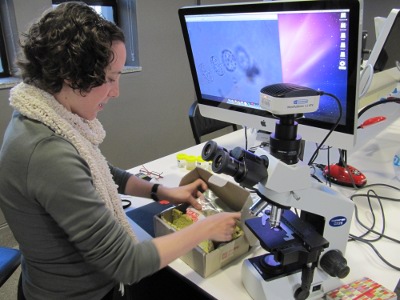
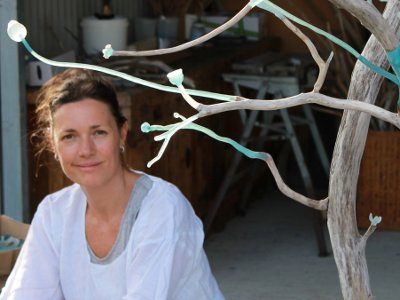
Antonia (left) and Shona (right)
I culled the 100's of images she 'collected' from my samples to provide the visual catalysts for the culminating exhibition "A Ripple Effect" at Noosa Regional Gallery in 2012. Antonia also facilitated the identifications of the diatoms I chose to use, with CSIRO. The larger than life 'hybridiatom" sculptures that resulted, highlighted the remarkable and devastating fact that micro-plastics had infiltrated our smallest organisms and were now at the bottom of the food chain. Antonia attended and participated in the associated floor talk for the exhibition and we spent the 2hr drive back to Brisbane discussing ideas of 'cross-pollinations', 'what it means for something to be native or indigenous' and 'is there any such thing as pristine Nature anymore?'
Three years on, my latest works take a futuristic journey into 'The Plasticene' - a geological time of synthetic life forms where nature and plastic have 'symbiosed' - or as Antonia describes it "a palaeontology of the future". Our journey continues in a feed-back loop with each other and the world we inhabit.
Other than this serendipitous connection with Antonia any 'scientific knowledge' I have gleaned is from the press,documentaries and a layman's interest in natural science fuelled by Ernest Haeckel's "Art Forms in Nature" and as a child by 'bushwalking parents'. Antonia brings an intellectual rigour to our collaborative process that is as imaginative as it is logical, it has been fascinating and enriching to be able to delve deeper with her. Our communications have moved seamlessly around science, art, politics and the personal, but it was Art and Serendipity that brought us into contact. Art was the connection point from which everything else has flowed.
Shona Wilson 2013
Represented by King Street Gallery, Sydney
and Mossgreen, Melbourne
Notes for exhibition designers:
The design challenge is how to illuminate the prints within an overall dimly lit space. Prints are framed, like microscope slides (see below) and each measures 43 x 19 x 1.5 cm. All 14 prints can fit into a space 155 x100cm FRAMED ( or unframed)
The artist needs to be advised about may many prints to bring and whether to bring them framed or unframed.
Each of the three object works in glass domes (see above) are to be mounted on separate plinths.
Artwork of 'Memoirs from the Milky Way' (in progress) requires its own plinth and may require an extra plinth for the printed take-away versions (see below).
18 works in total
PAPER PRINTS - 4 SERIES (2012)(hand coloured dry point and emboss on Arches paper)
TASMANIA SERIES X 4
1.'Hybridiatom Skelotonema' - 430 x 190 x 20mm, drypoint etching on Arches, ed. 1/3
2.'Hybridiatom Thalassiosira' - 430 x 190 x 20mm , drypoint etching on Arches, ed. 1/3
3.'Hybridiatom Navicula #1' - 430 x 190 x 20mm, drypoint etching on Arches, ed. 1/3
4. 'Hybridiatom Navicula #1' -430 x 190 x 20mm, embossed print on Arches,ed. 1/3
NOOSA SERIES X4
1. 'Hybridiatom Ornithocercus Magnificus' – 430 x 190 x 20mm , drypoint etching on Arches, ed. 1/3
2. 'Hybridiatom Grammatophora #2' - 430 x 190 x 20mm , drypoint etching on Arches, ed. 1/3
3. 'Hybridiatom Cocconeis' - 430 x 190 x 20mm , drypoint etching on Arches, ed. 1/3
4. 'Hybridiatom Cocconeis' - 430 x 190 x 20mm , embossed print on Arches, ed. 1/3
SYDNEY SERIES X4
3. 'Hybridiatom Amphora' - 430 x 190 x 20mm, drypoint etching on Arches, ed. 1/3 4. 'Hybridiatom Amphora' - 430 x 190 x 20mm, embossed print on Arches, ed. 1/3
FORSTER SERIES X4
1. 'Hybridiatom Grammataphora #1' - 430 x 190 x 20mm, drypoint etching on Arches, ed. 1/3
2. 'Hybridiatom Navicula #2' - 430 x 190 x 20mm, drypoint etching on Arches, ed. 1/3
3. 'Hybridiatom Chaetoceros Lorenzianus' - 430 x 190 x 20mm, drypoint etching on Arches, ed. 1/3
4. 'Hybridiatom Chaetoceros Lorenzianus' - 430 x 190 x 20mm, embossed print on Arches, ed. 1/3
OBJECTS IN DOMES X3 - (2013)
1. 'Specimen1&2' (20 100AD) - found @ 60' N/120'E - Lepidoptera Plasticae " mixed found and processed natural and plastic media under glass dome 370 x220 x220mm - 2013
2. 'Specimen 3&4' (6975AD) - found @ 15' S/150'W - Hemiptera Plasticae " mixed found and processed natural and plastic media under glass dome 270 x250 x250mm - 2013
3. 'Specimen 5,6&7' (17 235AD) - found @ 2' N/120'E - Phasmatodea Plasticae " mixed found and processed natural and plastic media under glass dome 520 x320 x320mm - 2013
'MEMOIRS FROM THE MILKY WAY' - (2012)
1 x etched acrylic sheet 18 x 23 x 1cm with 100 printed take-away b&w printed copies ( 50 A4 sheets cut in half)
Text to be printed and mounted for wall display:
'PLASTISCENIC - FUTURE REMAINS'
A very long time ago...
On a blue planet in the Galaxy Milky Way, microscopic plastic particles began to infiltrate single cell organisms and so began the Age known as The Plasticene. The specimens in this exhibition are the results from archeological finds on this planet dating from the Early, Middle and Late Plasticene. (1950-60740 AD).
Shona Wilson
Sept 2012
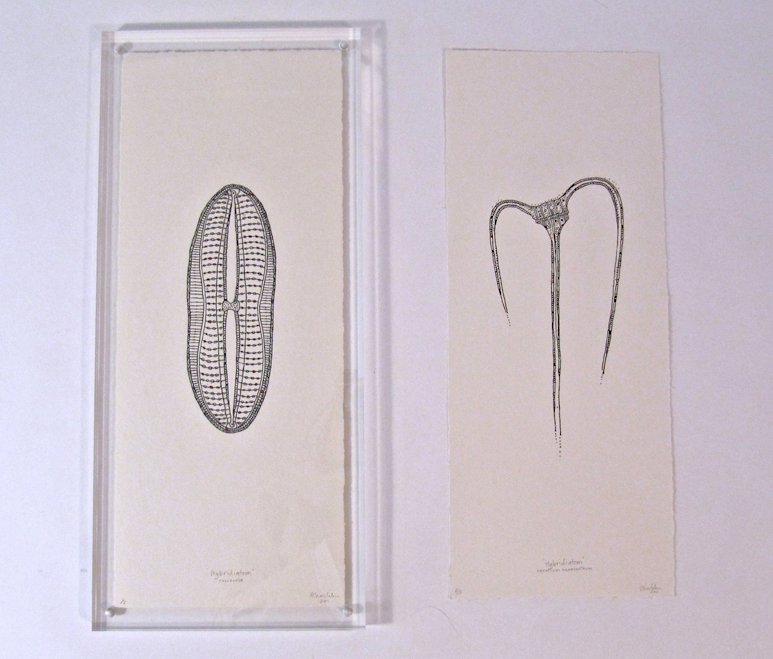
Print display options
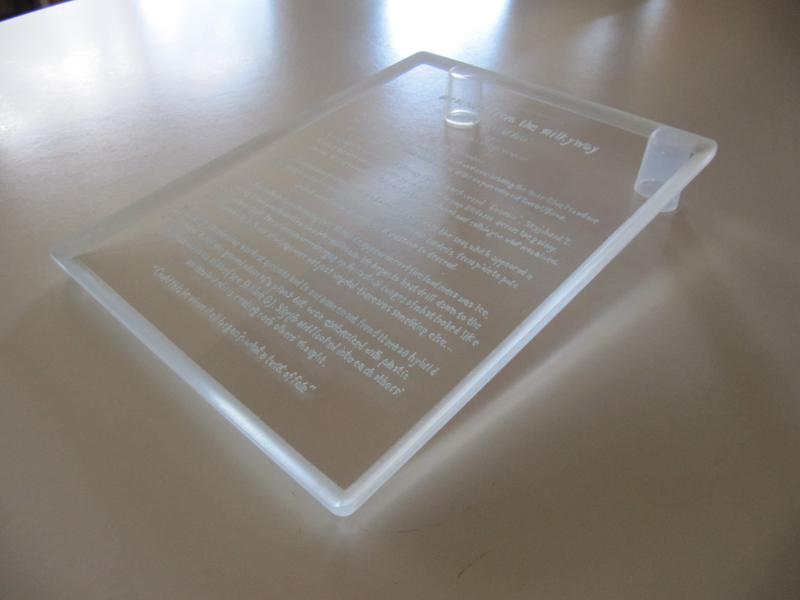
Memoirs from the Milky Way Story by Shona Wilson. Hand engraved acrylic
To evaluate how reciprocity works in Living Data and how our program could be improved, I ask contributors,
What do you most value about our work?
What have you contributed?
How have you benefited?
How could our program be improved?
Shona Wilson, Artist, Australia
What do you most value about our work?
That you/someone is doing it!! The ability of this work to engage a wider
public audience in a emotionally and intellectually unique way - which can
have greater impact and therefore capacity to inspire and change human
behaviours in relation to climate change and environmental challenges
generally.
What have you contributed?
A series of sculptures and prints which focus attention on plastic's
interactions with the natural world- to create fictional metaphors for
possible hybrid results of this ever increasing cross-pollination.
How have you benefited?
Through participation in the event i was able to engage with more
scientists and artists in this field and be further inspired and energised
to the task of making this purposeful art.
How could the Living Data program be improved?
Lisa needs an assistant! so that she is released from all the small detail
running logistics and can focus on the larger elements of curating. The
support of funding bodies and institutions for greater publicity of the
event.












